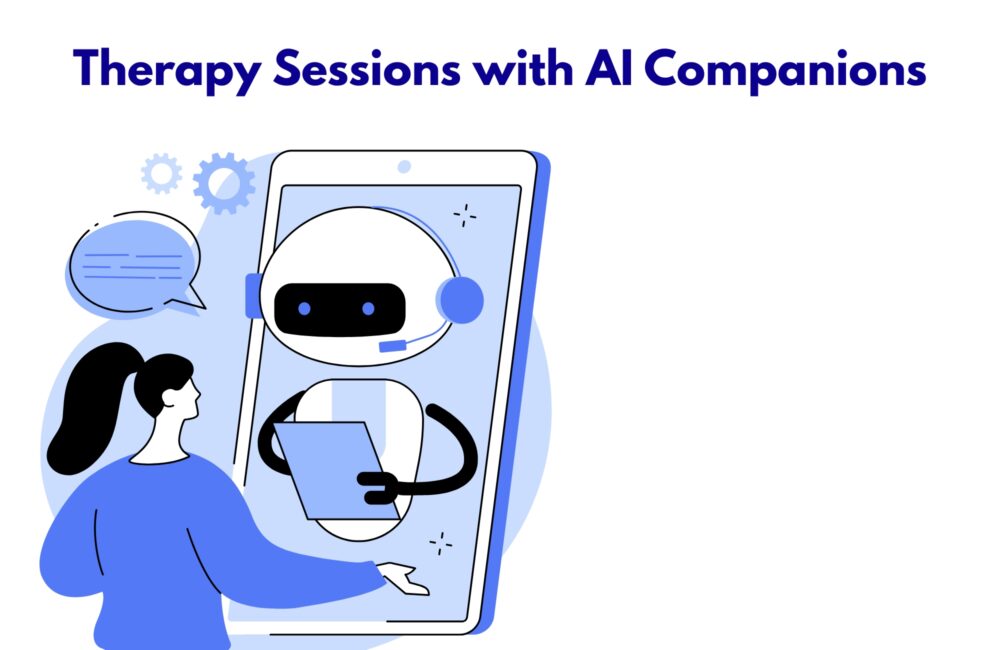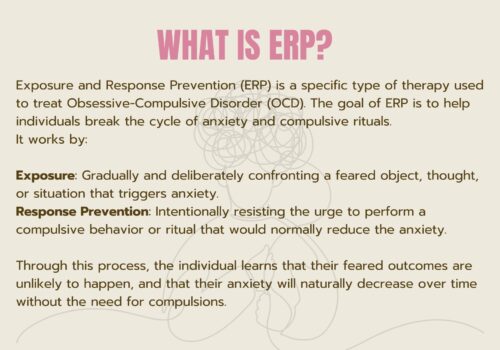Mental health has now been highlighted as a global priority. In the wake of COVID-19, the world experienced a surge of anxiety, depression and related disorders. According to the United Nations, the pandemic caused a 25% increase in the prevalence of anxiety and depression worldwide, exposing severe gaps in access to care and continuity of support.
Though traditional therapy is still the major player in battling, but even the best mental health systems could struggle to provide the help needed on a timely and continuous basis. In the meanwhile, the patients are still seeing themselves through the maze of emotions unguided and with no help. A situation like this, unstructured, and unsupervised, can significantly affect recovery and engagement.
To accelerate the process of closing such a gap, several platforms have turned to digital support tools. One of the latest elements coming from the AI field is conversational agents used for virtual companionship and emotional support. They offer not only the above functions but also watch over the user’s mind and guide them to solve basic troubles in case therapists are far away.
The potential is not just theoretical. The global AI companion market size was estimated at USD 28.19 billion in 2024 and is expected to witness a CAGR of 30.8% from 2025 to 2030.
Whether used individually or as part of a broader enterprise AI solution within clinics or mental health programs, these tools help bridge the critical gap between therapy sessions with personalized, ongoing support.
In this article, we’ll look at how AI companions are helping users between therapy sessions. We’ll cover how they work, where they add value, and what both patients and therapists think about their role.
Understanding AI Companions in Mental Health
AI companions in the mental health field are engineered to provide continuous emotional support and engagement outside regular therapy sessions. These automated programs hold communication with the users, aid them in therapy work, and at the same time, supervise their mental state in the time lapse between consultations with the therapist.
While the level of system acceptance and the quality of the two-way communication dialogs may vary, most of the virtual agents are designed to help users build a connection, get emotional support, and achieve continuity of coping strategies while managing their mental health issues.
Rather than acting as replacements for licensed therapists, these companions are meant to complement therapy. They can help individuals with coping strategies, offer reminders to practice mindfulness or journaling, and provide a safe space for expression during off-hours. At some point, tools are patterned after therapeutic orientations such as cognitive behavioral therapy, while others focus more on active listening, mood tracking, or simply checking in.
The strength of these tools lies in the fact that they can change depending on how users interact with them. They can observe the user’s moods, prompt self-reflection, provide analysis and offer help that can support the whole treatment process. What makes them valuable is not clinical judgment, but consistency. Digital companions can bridge the gap between the therapy sessions providing care, attention and with a personalized approach when therapy is scheduled weekly or less.
Benefits of AI Companions Between Therapy Sessions
AI companions are emerging as valuable tools in mental health support, especially in the time between therapy sessions. Here are some of the key benefits they offer to users navigating their emotional well-being:
1. Always Available Support
The tools provided 24/7 assistance without any delays through live interaction during stressful situations like overstress, lack of sleep or when therapists aren’t reachable.
2. Promotes Routine and Consistency
Daily contacts, mood monitoring, or guided activities help maintain therapeutic momentum and reduce emotional drift between sessions.
3. Encourages Honest Expression
Very often the users’ situation is such that they feel more at ease in expressing their feelings to an understanding digital companion who remains non-prejudiced, and this may be especially helpful for those who are burdened by stigma, shame, or social anxiety.
4. Reinforces Coping Techniques
A lot of the platforms have the option of leading the user through various processes such as controlled practices in breathing, journaling, or cognitive-based rephrasing techniques.
5. Improves Emotional Awareness
Regular prompts to reflect on feelings or situations helps users recognize patterns and become more attuned to their emotional landscape.
6. Captures Data Over Time
Mood logs, activities, and behavioral inputs can be valuable for the therapist to get a clearer picture of a patient’s week-to-week experience.
7. Builds a Sense of Connection
AI cannot replace humans, but they can present some conversational characteristics that can still eliminate the feeling of loneliness, especially for people who live in solitary places and those who rarely receive social aid.
8. Supports Self-Efficacy
Giving users a tool they can turn to anytime helps reinforce autonomy and confidence in managing their mental health day-to-day.
Therapist Perspectives on AI Integration
As AI companions become more common in mental health care, many therapists are beginning to explore how these tools can complement their work. Here’s how professionals view the integration of AI into therapeutic practice:
1. Seen as an Extension, Not a Threat
Most therapists think of AI companions as their hands that go beyond the consultation room and thus give them a larger capacity to work. During the time of loneliness, these companions provide reassurance, give hope, and support the progress which is taking place in the patient’s life.
2. Useful for Reinforcing Homework and Practice
AI companions help people become consistent in their therapeutic exercises. These types of tools provide journal prompts and reminders, as well as CBT-based exercises. There are regular workouts provided, which are missing for many in-person sessions.
3. Adds Value Through Behavioral Data
Therapists can now gain more insights into patients’ experiences by analyzing the mood, the frequency of interactions, and the changes in the symptoms of the patients which are reported in digital tool. This variety of insights can have an equal, if not a greater impact and can enhance session planning and treatment personalization.
4. Concerns Around Emotional Depth and Safety
Therapists acknowledge that these tools can’t fully replicate the nuance of human empathy. They also note the importance of setting boundaries—AI should not be used in place of crisis intervention or deep clinical care.
5. Positive Reception When Used Collaboratively
Therapists who actively involve these tools into treatment plans often see better engagement from patients. Collaboration ensures the AI support aligns with the therapeutic goals set in-session.
6. Ethical Awareness Is Essential
The professionals stress the importance of being clear about the way AI is incorporated into the therapy and especially about data privacy, patient consent, and what the AI can and cannot do.
Limitations and Ethical Considerations
AI mental health companions are quite helpful, but they have their own restrictions and ethical issues. Thus, keeping everyone aware of these issues will ensure their responsible and safe use:
| Limitation / Ethical Concern | Description |
| Lacks Human Intuition and Empathy | Artificial intelligence can pretend that they understand, but they lack the possibility of experiencing affection, or recognizing subtle nuances, tone, and individual feelings. These might be reasons why artificial intelligence is not effective in personal and traumatic conversations. |
| Not Designed for Crisis Intervention | These applications are no replacement for crisis intervention or clinical care. Depending on these tools during severe episodes could make it difficult for users to receive immediate help. |
| Privacy and Data Concerns | AI companions collect sensitive and emotional data. If the devices do not adhere to strict security rules, users risk exposure of deeply personal information. Especially when enterprise AI solutions are deployed at scale within healthcare systems or employer-sponsored wellness programs. |
| Risk of Over-Reliance | People may become dependent on AI’s help, feeling like they are in the same place with a clinical consultant. However, from the other side, it can lead to wrong comfort, and it becomes a reason for real world interaction or get professional help. |
| Algorithmic Bias | In the case of the lack of diversity in the training data, the AI models might be reinforcing the already available stereotypes or not understanding cultural and contextual cues. Therefore, users may be exposed to wrong information or irrelevant advice that is not helpful for certain users. |
| Concept of Regulatory and Compliance Gaps | With the rise of these tools, especially among enterprise AI solutions targeting the larger demographic, the existing mental health regulations are often outdated against such technologies. A lack of oversight can pose legal and ethical risks for both providers and developers. |
Best Practices for Incorporating AI Companions
To use AI companions effectively in mental health support, thoughtful implementation is key. Here are best practices that ensure these tools are both safe and beneficial within therapeutic settings:
1. Ensure Therapist Involvement
These devices get the most out of them when they are used as a part of a coordinated care program. Therapists should introduce, monitor, and occasionally review how the AI companion is being used to align it with clinical goals.
2. Educate Users Clearly
It is important that they exactly know what AI can and can’t do. AI is a support tool—not a therapist—and should not be relied on during crises or for diagnosing conditions.
3. Choose the Right Tool for the Right Context
Not every solution fits every need. For patients in structured therapy, tools may offer better alignment with therapeutic models.
4. Review Privacy and Data Policies
Before integrating any tool into a mental health setting, ensure its data handling practices comply with relevant regulations (e.g., HIPAA, GDPR). Transparency in how user data is collected, stored, and shared is non-negotiable.
5. Start with a Pilot Phase
In case clinics or healthcare providers think about the possibility of wider usage, the right step to take would be to start with a few people. Feedback should be collected on the usability of the tools, and the effectiveness, as well as the emotional impact of the devices, should also be evaluated before they are put to more use.
6. Set Boundaries Around Use
The advice is not to engage with the device to the point of imbalance. Some users may, therefore, be excessively attached to daily check-ins or see this AI as a source of primary relationships. Guide them toward healthy, complementary use.
7. Integrate with Broader Care Models
When possible, connect AI companion insights with existing care plans, electronic health records, or progress reports. This not only improves continuity but also makes clinical decisions that are backed by more information.
Future Outlook
Artificial intelligence is playing a significant role in the development of AI companions. They don’t stand alone but serve as logical extensions of care. Their ability to offer real-time support, encourage self-awareness, and maintain therapeutic continuity has positioned them as valuable assets in both clinical and personal contexts
The developments in technology are going to move these tools further forward. We can expect to see more emotionally responsive systems, better personalization, and integrations with biometric data to offer deeper insight into a person’s mental state.
But growth must be matched with caution. Fundamental questions regarding ethics, consent, and professional judgement are key ones. We need to be aware that the tools may be new and promising, but they are only real if they are supported by the proper frameworks. Continual studies, meaningful practices, and the entry of regulatory guidance will significantly change the landscape of AI companions and their feasible roles in mental health. If used intelligently, these companions can essentially bridge one of the widest straddled-yet-ignored gaps in mental health care: The Interval of time between therapy sessions. And for many, that space can make all the difference.















